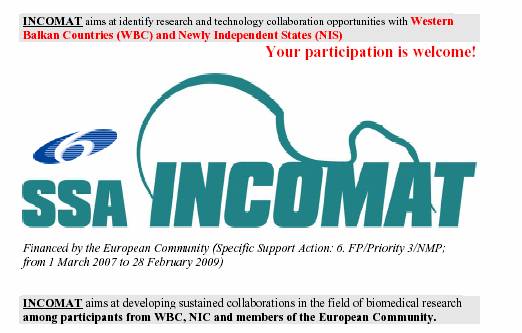
DEPARTMENT OF REAL CRYSTALS PHYSICS
Head of the Department is Doctor of Sciences Pavel P. Pal-Val
tel.: + (380)-57-341-08-31
fax: + (380)-57-340-33-70
E-mail: palval@ilt.kharkov.ua
The Department was founded by Prof. Valerian I. Startsev in 1961 with the purpose of investigating the dislocation mechanisms of low-temperature plastic deformation of solids, studying the properties of individual dislocations and establishing a link between low-temperature mechanical properties of solids and those of structural defects.
Fields of research:
1.Experimental study into internal friction, plasticity and fracture of a
wide variety of solids at low (2-300K) and very low (0.4-2.0K) temperatures.
Tested materials:
alkali halide crystals;
semiconductors;
bcc, fcc, fct and hcp single crystals of pure metals;
single- and polycrystals of metal alloys;
single crystals and ceramics of metal-oxide high-Tc
superconductors;
amorphous metal alloys of metal-metalloid systems (in strips
and bulks);
fullerite C60;
2. Theoretical study of different dislocation phenomena and effects with due account of a specific role of low and superlow temperatures: nucleation of dislocations; quantum and thermally activated motion of dislocations through lattice and impurity barriers; dislocation-conduction electron interaction in normal metals and superconductors; influence of dislocations on elementary excitation spectra of crystals; dislocation mechanisms of acoustic emission of crystals; interaction between dislocations and molecular orientation states in fullerite C60.
The main results gained wide acceptance:
Observation of twinning dislocations and their motion along
the twin boundary in calcite what is equivalent to the recognition of a dislocation mechanism of crystal
twinning.
Observation of and sharp distinction between two branches of
dislocation mobility, one of which corresponds to a thermally activated and the other to a dynamic mode of
dislocation motion.
Detection of metal softening in going to a superconduction
state, what is the most prominent achievments of the Department.
Observation of low-temperature anomalies in plasticity of
metals, alloys and alkali halide crystals and their correlation with quantum properties of dislocations.
Determination of principal regularities in low-temperature
jump-like deformation of metals, and observation of the action of superconducting transition on this
deformation.
Detection of and study into low-temperature
superelasticity of short-range ordered In-Pb alloys caused by pseudo-twinning.
Observation of low-temperature anomalies of microhardness of
fullerite C60 and their relation to orientation relaxation of C60 molecules.
Development of a theory of dislocation electron
drag in superconductors.
Development of a theory of acoustic emission by
dislocations in crystals, and prediction of new mechanisms of annihilation and transient radiation.
Theoretical description of the influence of molecular
orientation relaxation on thermal, acoustic and plastic properties of the low-temperature phase of fullerite C60.
Detection of local adiabatic
heating up to melting temperature on the surface of low-temperature shear fracture in tension for metallic glasses and in
compression for bulk ones (below 1K included).
Observation of anomalies in the
mechanical properties of metallic glasses of stoichiometric compositions (eutectic and some others) and of their relation to the
atomic structure of intercluster boundaries.
Observation of a low-temperature anomaly in diffusion
of dislocation kinks in the second-kind Pierls relief.
Two unique machines for testing mechanical properties of materials under active straining and creep conditions within a subkelvin temperature range down to 0.4K have been designed and made. Technical characteristics of the machines are as follows:
| minimum temperature | (0.44 ± 0.02) K |
| refrigerating capacity | 10 mw at 0.7 K |
| mode of loading | tension, compression |
| deformation rate | 0.001-10.0 mm/min |
| maximum load | 2000 N |
| maximum stiffness | 2500 N/mm |
| maximum elongation | 25 mm |
| 3He cryoctat volume | 75 cm3 |
| deformation time at a minimum cryostat temperature | 3 hrs |
| deformation mode | tension, compression, simple shear | ||
| limiting load | 0.3 kN | ||
| sample dimension: | |||
| in tension | 50*1*5 mm | ||
| in compression | 10*5*5mm | ||
| in shear | 3*5 mm | ||
| recording accuracy of relative deformation | 0.000001 | ||
| temperature stabilization accuracy | 0.01K within 0.4-2K | ||
A universal units is constructed for complex study into acoustic, resistive and magnetic properties of materials at temperatures ranged from 1.4 to 340K Within the temperature range the unit permits one:
The unit includes a temperature stabilizer and an interface module providing data transfer to a personal computer. The experimental data are processed with an application software package specially developed for each type of the measurements. The possibility exists of operating in real time.
The results of the investigations are embodied in the monographs, booklets and reviews by the research workers of the Department; the main of these are given below:
There are 5 doctors and 11 candidates in Physics and Mathematics Science at the
Department.
The leading research workers (heads of research teams) are:
Prof. Pustovalov
Vitalii Valentinovich
Prof. Soldatov Vasilii Petrovich
Prof. Bengus Vladimir Zyamovich
candidat Lubenets Serzh Victorovich
Dr. Pal-Val Pavel Pavlovich
candidat Moskalenko Vladimir Andreevich
Dr. Fomenko Larisa Stepanovna
candidat Braude Irina Semenovna
candidat Smirnov Aleksandr Removich
candidat Tabachnicova Elena Dmitrievna
candidat Smirnov Sergei Nikolaevich
candidat Isaev Nikolai Vasiljevich.
Department has long-term traditions of international
cooperation. At the present time department participates in INCOMAT project
financed by Framework Programme - 6 of European Community, Priority 3
“Nanotechnology and nanosciences, knowledge-based multifunctional materials; new
processes and devices”. Objective of project is creating international
cooperation teams of excellence in the field of emerging biomaterials surface
research for implants and artificial joints. Fifteen innovative firms and
institutes from 10 European countries and
